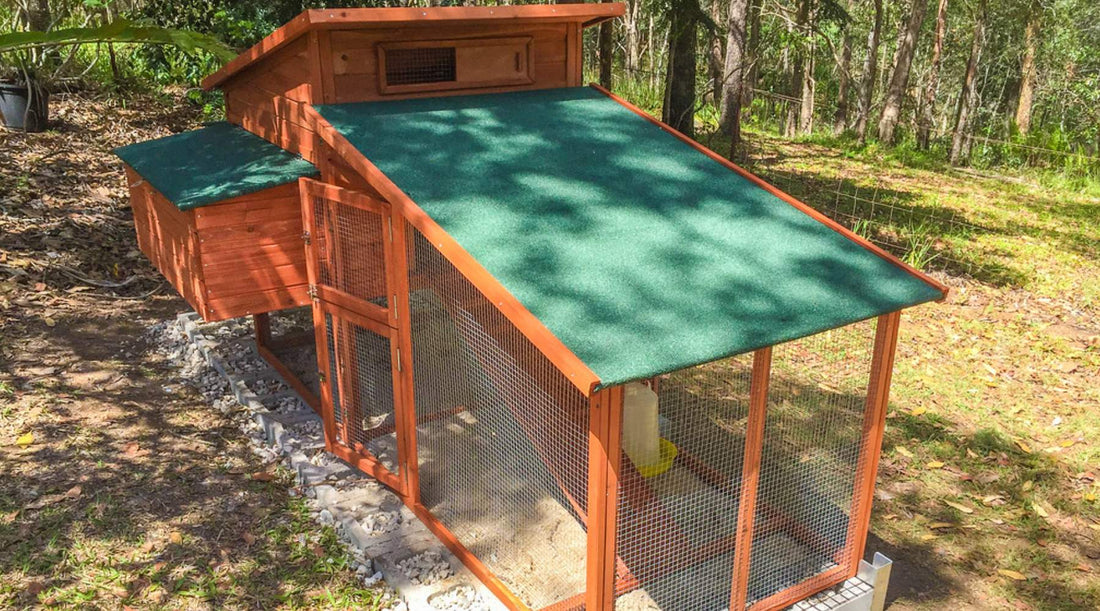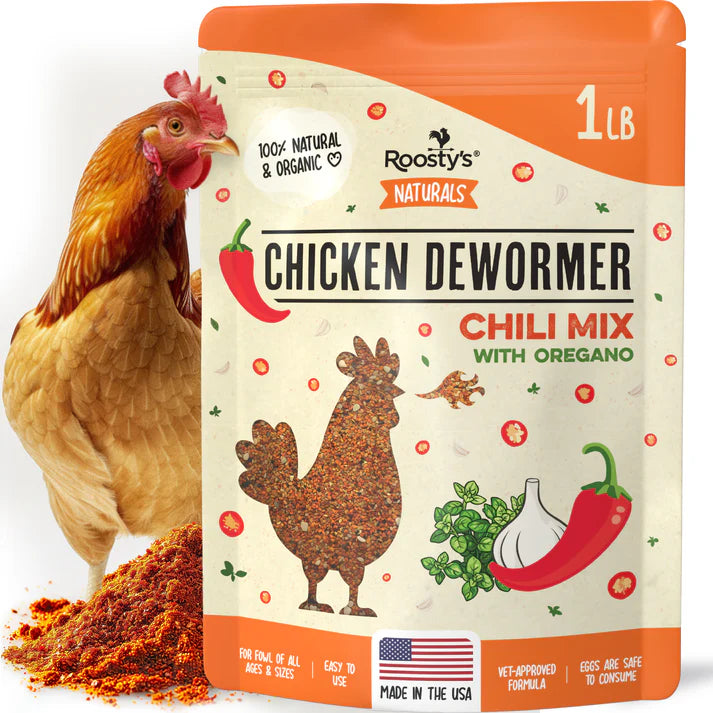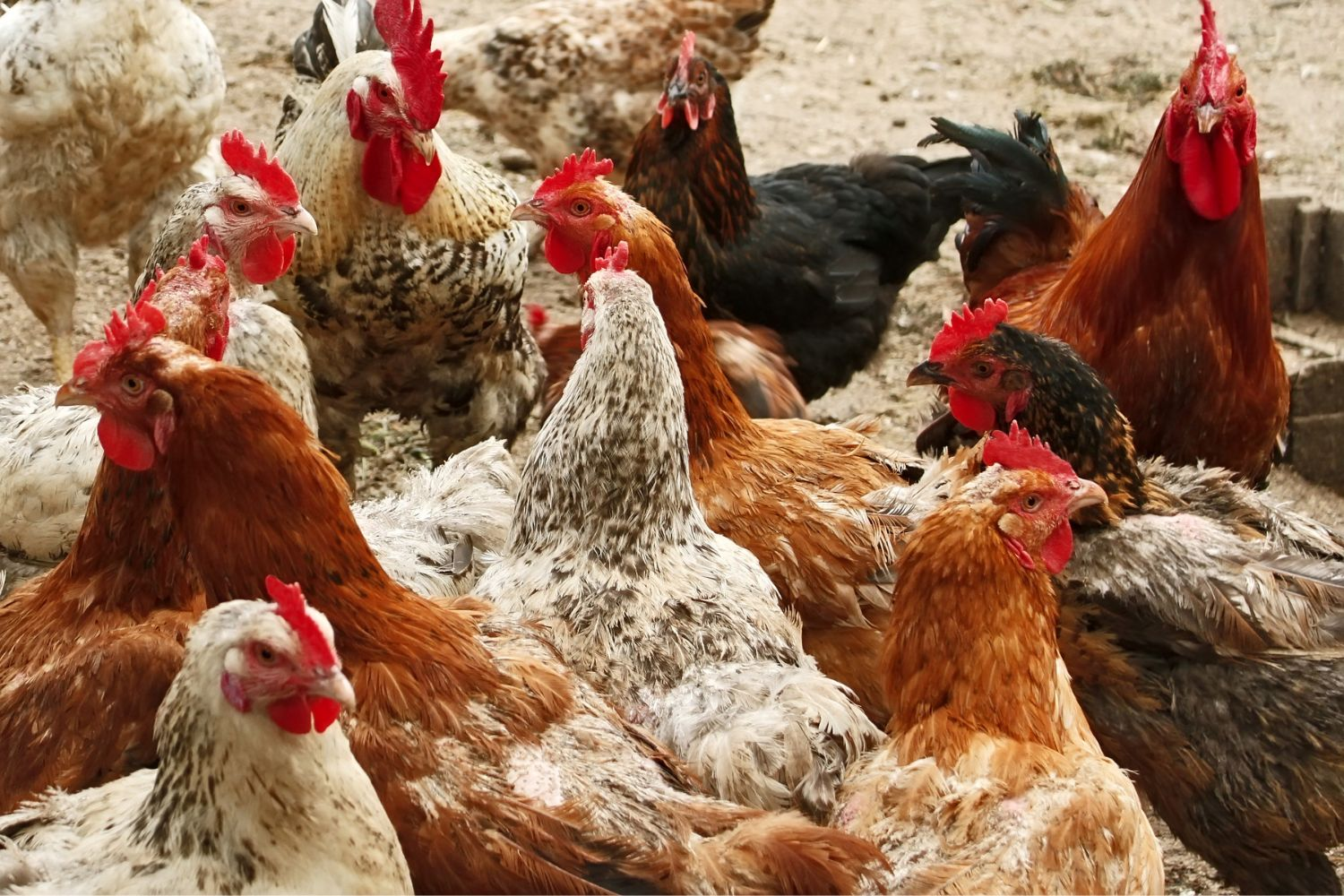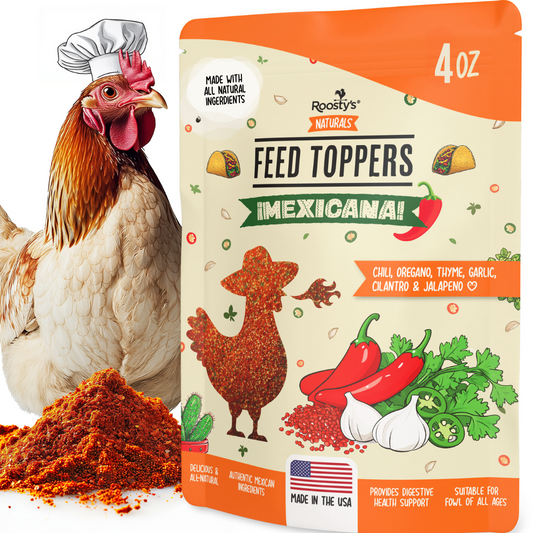
How Much is a Chicken Coop? Find the Perfect Coop for your Flock

Fresh eggs and the wholesome sound of a cockerel’s call are only two of the many joys of chicken ownership.
Just imagine heading outside in the early morning sun to let your lovely chickens loose on your land.
That’s self-sufficient living at its best, and it’s a dream that may be easier to achieve than you think.
After all, chickens are pretty self-sufficient creatures. You don’t even need a whole homestead to house this livestock.
All your chickens need from you is a reasonable outside space to explore, plenty of food to enjoy, and, importantly, a safe indoor space for sleep and egg laying.
Chicken coops are the crux of chicken ownership, and they can make all the difference to the number of eggs you enjoy, and how well protected your chickens are from predators.
That’s why many owners start researching chicken coops before they even settle on which breeds to fill them with.
Most potential owners especially want to know one crucial thing – how much is a chicken coop?
As with any purchase, there’s no set answer to that question. Chicken coops can cost anywhere between $300-$2000 on average.
That said, a high-end chicken coop could set you back by $4000, while a DIY coop might cost as little as $100.
We understand that sounds frustratingly vague, so in this article, we’re going to help you understand what your unique chicken coop is likely to cost by breaking things down a little further.
Let’s get clucking!
1. Factors affecting chicken coop costs
We’ve already established that chicken coop costs fluctuate pretty drastically. But, that information in itself isn’t useful to anyone.
That’s why we’re also going to consider the unique factors affecting how much a chicken coop costs.
Understanding this will help you to grasp roughly what price range your dream chicken coop fits within.
This information could also be useful in helping you to get more cluck for your buck thanks to potential savings in certain areas.
In large part, the factors that will have the most impact when you’re asking how much does a chicken coop cost include –
-
Size
As with most purchases in life, the bigger your coop is, the more you’ll end up paying.
After all, larger coops require more materials and increased labor. The size of coop that you’ll need is going to depend on factors like –
- Chicken breed
- Amount of chickens
- Available space
Remember, too, that your chickens need a coop that allows them to huddle close for warmth, so going too big can prove detrimental.
Instead, you’ll want to ensure that you’re providing around 4 square feet of floor space for a standard chicken. This amount can be reduced to 2 square feet for a small breed like a bantam.
-
Materials
The materials used in a chicken coop can also drastically impact price. We’ll cover this in more detail a little later, but typically expensive materials include mesh and plastic, which can cost around $35/27.50 per board roll.
More affordable options might include PVC or softwood, which can cost as little as $2.50 per board roll.
It is worth noting, however, that a cheaply made chicken coop that doesn’t last or offer adequate protection may be a false economy.
To avoid that, consider things like how many chickens you’re housing, any elements the coop might be up against, and how long you would like your coop to last.
As we’ll consider, DIY coops may also provide an option for the use of more expensive materials for less cost overall.
-
Features
As with any purchase, you can get as fancy or as basic a chicken coop as you need.
All chickens require basic features like ventilation, nesting boxes, perches, and feeding stations to live a healthy and happy life.
Outside of that, you can find coops with features that include egg catchers, shutters, and more.
These features can all improve quality of life, but they can also cost and should be factored into your budget early on.
2. Budgeting for your chicken coop
Now that you know what impacts how much your chicken coop will cost, it’s time to start budgeting!
After all, whether you stick with basics or want a high-end coop, this is an expense that you need to include in your plans for chicken ownership.
By remembering that and setting the money aside in advance, you should be better able to buy whichever coop is the best fit when the time comes.
In large part, getting started with budgeting means thinking about what we’ve already discussed.
Having a clear idea of what size of coop you need, the best materials for the job, and the features that you’ll require will help to provide you with a ballpark figure.
Within that, you’ll be able to start making wiser budgeting decisions by considering factors such as –
- DIY vs shop bought
- Outdoor requirements
- Potential flock growth
A DIY coop, for instance, may allow you to invest in a structure made with stronger materials than you could afford from a shop-bought option.
Equally, if you have a secure yard in place already, you may be able to invest in a generally higher quality coop that doesn’t have the addition of outdoor space.
It’s also worth noting that, if you intend to grow your flock over time, you may be better off beginning with a smaller, more affordable coop before making a hefty investment on a high-quality small coop that’s unlikely to last.
3. DIY vs professional chicken coop construction

That last point leads us nicely to our next crucial consideration – is a DIY or a professional chicken coop the better option?
At the most basic level, labor costs added onto the materials of a shop-bought coop will make this a generally more expensive option, especially if you’re also factoring in delivery, etc.
But, how much does it cost to build a chicken coop, and will that be the cheapest option for everyone?
The simple answer is no, not necessarily. While DIY chicken coops certainly have the potential to be as little as half the price of shop-bought options, affordability here is also dependent on –
- Experience levels
- Existing tools
- Size of project
- Materials required
- Etc.
Building a coop can save you as much as $1000 in labor costs. If you already have experience in building secure structures, and the tools necessary to achieve that, then this is certainly an affordable option.
However, if you’ve no experience and would need to buy a whole toolkit on top of your materials, then you’re at risk of either spending more in the first place or ending up with a structure that’s not fit for purpose.
For many chicken owners, a DIY coop can provide the opportunity to afford a coop made of higher quality materials than they would get with a shop-bought option.
If you’re working with a tight budget, it is also possible to make a DIY coop for as little as $100 by using things like cheaper, recycled materials which could include wooden pallets and tin scraps.
While these coops don’t always have a long lifespan, they can provide a great, affordable starting point for owners who are looking to grow their flock later anyway.
Can you use an existing structure?
If even a DIY chicken coop would stretch your budget, it’s worth noting that it is possible to incorporate a chicken coop into an existing structure like a storage shed or something similar.
This is a great option that can drastically reduce the need for materials and expertise. If you’re considering this choice, you simply need to make sure that your existing structure is–
- Predator/escape proof
- Well ventilated
- Insulated (in cold climates)
- Meshed on windows
- Incorporated with perches and nest boxes
- Accessible via a chicken door
These are relatively affordable and simple additions to make and could result in a large, high-quality chicken coop that would likely be some way out of your budget otherwise.
4. Cost-effective materials for building a chicken coop
The materials used in a chicken coop are perhaps the strongest indicators of price, and the costs of materials available can vary drastically.
As mentioned above, the most obviously cost-effective materials are recycled materials that may include reused wooden pallets and scrap materials like tin and lumber.
However, being recycled does shorten the lifespan of coops made of these options, and so, while affordable, recycled materials aren’t always automatically the most cost effective in the long term.
Other cost-effective materials according to their average price include –
|
Material |
Average cost |
|
Softwood |
$2.50 per board foot |
|
PVC |
$5.50 per linear foot |
|
Redwood |
$11 per board foot |
|
Corrugated tin |
$17.50 per sheet |
By comparison, higher-end materials like plastic can cost as much as $27.50 per roll.
However, to truly understand the efficiency and affordability of materials, it’s important to consider more than just their price.
You’ll also want to look at issues like durability and efficiency as follows:
- Wood: Affordable wood products like softwood, redwood, and lumber can be used as effective framing materials that bring benefits including natural pest-proof repellants and rot resistance. However, wooden coops do also need to be treated and cleaned regularly to ensure durability. Hardwood coops can also be a relatively pricey option, though they tend to last longer.
- PVC: PVC is an affordable and lightweight material that can be used for portable outside roaming areas. PVC is not typically strong enough for chicken coop foundations, and is unlikely to last when used as such.
- Tin: Tin or metal coops provide great insulation and protection when used as skeleton structures or sheet roofing. Initial costs can be higher, but metals are 100% recyclable, fireproof, and durable.
5. Hidden costs to consider when building a chicken coop
Hidden costs can often prevent the seemingly affordable option of a DIY coop from saving you money.
That’s why it’s important to make sure that you’re factoring in hidden costs when you budget for your DIY coop in the first place, such as –
- Tools: As we touched on, keen DIYers with existing tools are perfectly positioned to benefit from affordable DIY coops. However, if you need to buy an entire toolkit that includes pricey tools like drill sets, then you may soon end up spending more than you had intended on your coop without even realizing it.
- Wasted materials: Mistakes and material offcuts can result in a lot of wasted materials which, if you’re using high-end hardwoods or mesh that costs as much as $35 per board roll, could see costs building up quickly. If you make a lot of mistakes along the way, you may end up having to repurchase and replenish even your most expensive materials.
- Time delays: While you can’t exactly put a price on your time, DIY coop projects that can take anywhere between weeks and months depending on your skill set will mean potentially hours or days of work. If you have to take time off to complete this project, or even rent a coop while you’re finishing up, costs could very soon escalate.
Understanding these risks, factoring for them, and knowing what they mean for your overall budget is crucial for ensuring that your DIY project is more affordable than a shop-bought coop that would offer a much easier solution.
6. Tips for saving money on coop expenses

Whether you have a limited budget or are just looking to keep coop expenses down so that you spend elsewhere (you still need to buy your chickens, after all!), there are a few different things you can do to save money on your coop.
We’ve already covered the most effective of those steps above – DIY coops can cut your budget in half, and if you follow the tips we’ve already discussed, you could still end up with a high-quality finished product.
If your toolkit or expertise isn’t up to the task of a DIY coop, however, there are still a few other things you can do to save yourself some money. They include –
- Sticking to a small flock: Logically, the more chickens you have, the more you’ll end up spending on a coop. If you have no specific reason for a huge flock, then sticking with just four or five bantams or other small chickens can result in a far more affordable coop setup.
- Saving on materials: While we’ve already discussed that outwardly expensive materials might end up being a worthy investment down the line, saving on materials where you can is still invaluable. Buying materials like lumber and metal at discounted prices during sales or wholesale deals can make a huge difference, as can the use of recycled materials if they’re of a high quality.
- Keeping on top with maintenance: Wood coops, in particular, require regular maintenance to stay strong and secure. While it might seem like an added expense, keeping on top of that maintenance can result in significant savings thanks to a coop that lasts a whole lot longer.
- Expanding on what you’ve got: Whether you have major plans to expand your flock or not, there may come a time when your coop no longer serves your flock size. When that happens, expanding your coop can lead to significant savings by both enhancing your initial investment and saving the need for a brand-new coop. Luckily, coop additions are relatively cheap and easy, with something like an extra nest box costing next to nothing with scrap materials, or just $30ish ready-made.
Pre-owned chicken coops
We’ve spoken about the benefits and potential pitfalls of recycled materials when it comes to your chicken coop, but there is one other cost-saving option that might be worth considering – pre-owned chicken coops.
Like recycled materials, this option can lead to less durable or lasting coops, but with plenty of pre-owned options on the market, this could be an affordable way to secure a high-quality coop of your choosing.
To determine whether a pre-owned coop is going to save you money in the long term, simply consider questions like –
- How old is the coop?
- Is there a history of infectious disease?
- Does the coop appear to be in good condition?
- Are the materials well maintained?
7. Is renting or buying a chicken coop better?
Another way that some owners choose to save money on their chicken coop is to rent instead of buying.
There are services available that allow you to rent a coop (and chickens, in some cases) for six months at around $575. This is a trend that’s skyrocketed in the face of rising egg costs, and it can certainly seem like a tempting option for budding chicken owners looking to get started. The benefits of choosing this option include:
- Generally lower upfront costs
- Trial ownership
- Complete chicken setups
For owners who are uncertain, or who have never handled chickens before, this could certainly be a great way to test the waters. However, when it comes to costs overall, long-term rentals can prove detrimental.
After all, if you did decide to keep your rental coop for longer than the initial six-month period, even just two years of ownership would result in costs of around $2,000+.
That’s the price of a high-end coop, and the chances are that your setup won’t be anywhere near what you could expect for that kind of cost otherwise.
That’s not to say that rentals aren’t a viable option for some people. If you’re looking for a short-term foray into chicken ownership, renting a coop might even save you money. However, rentals probably won’t work for you if –
- You intend to keep chickens for extended periods
- You want a high-end coop and set up
- You’re working with a limited budget
To determine whether rentals or buying are better for your needs, it’s therefore worth knowing a little about what you expect from your chicken-keeping journey, and how much you can realistically spend.
Researching rental companies and what they offer as opposed to what you could get for a similar price with DIY or shop-bought options will also help you to decide which option makes more sense for your unique chicken ownership journey.
8. The long-term maintenance costs of a chicken coop
Failing to maintain your chicken coop is going to cost you in either major repairs, a lost flock (predators love coop weak spots!), or the need for an entirely new coop just a few years down the line.
With that in mind, you should factor for the long-term maintenance of your coop at the budgeting stage.
Wooden coops that are often most common will especially require ongoing treatments like disinfectants, applications of natural oils such as flax, and even the application of strengthening non-toxic paint.
Regular cleaning, including a yearly deep clean of the entire coop, is also an essential part of coop and chicken ownership and requires the use of non-toxic products such as pressure washers, bactericides, and white vinegar.
These cleaning sessions provide a great opportunity to look out for other potentially costly maintenance issues that will require either the hiring of a professional (which will cost around $60 per hour plus materials) or a little additional DIY. Such issues may include –
- Pock-marked or gnawed wood
- Weather damage
- Visible pecking
- Damage to insulation
- Etc.
The perfect coop for your flock needn’t break your budget
While your coop will inevitably be one of the most expensive parts of your journey to chicken ownership, there’s no reason why it needs to break your budget.
Whether you’ve factored to spend $100 or $1000+, you simply need to consider essentials such as the materials you use, whether or not you’d be best making your coop yourself, and the maintenance necessary to protect that investment.
By factoring in these things at the budgeting stage, you should be able to secure the ideal coop in no time at all.
And, once your coop is in place, you’ll be able to get to the far more exciting business of choosing which chickens you’d like to turn that new structure into a home!








